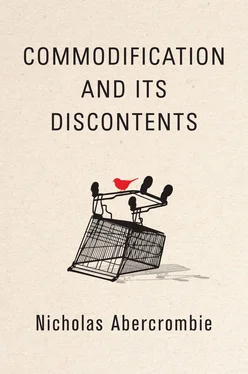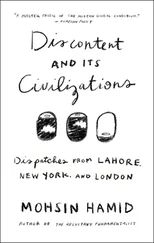There are more mundane considerations too. Land is a social and economic resource. It is required to grow food, to put up buildings, to provide roads and build factories. There is a strong collective interest in its use. It is difficult to imagine a society in which people were not able to move about, build houses or earn a living. As the authors of an influential textbook on land law say in introducing their book: ‘Since land provides the physical base for all human activity, there is no moment of any day in which we lie beyond the pervasive reach of land law … Largely unnoticed, land law provides a running commentary on every single action of every day’ (Gray and Gray, 2007: 1).
These special qualities of land have implications for the control over its use, a control that is, in modern times, given by ownership that is expressed in law and supported by the state. That ownership, however, is not straightforward.
There is a conventional account of land ownership and the law that goes with it that suggests a radical change took place between medieval conceptions of the use and control of land and a later notion of absolute property that developed slowly from the fourteenth century onwards (Linklater, 2015). A ‘landscape of rights and customs’ was replaced by ‘a landscape of private property’ (Williamson and Bellamy, 1987: 102). In the early Middle Ages, farmers had customary rights to the land that they worked, but they also had obligations to their lord. Gradually, however, these relationships changed so that large landowners had contractual relationships with their tenant farmers rather than customary ones and a class of larger farmers emerged who had ownership of the land that they worked. The large landowners saw themselves as absolute owners mainly, though not entirely, free to do what they liked with their land and were less constrained by customary obligation. Such a view of land ownership was, of course, contested by landless farmers and farm labourers over a very long period, mainly with a view to installing a system of peasant proprietorship. A different form of this ideological argument became prominent in the later nineteenth century, organized around the possibility of the nationalization of land promoted by followers of Henry George (Douglas, 1976; Tichelar, 2018b). No less a figure than J. S. Mill notably argued that: ‘No man made the land. It is the original inheritance of the entire species.’ People should only own what it is that they create. There can therefore be no private property in land, only in its produce. For Mill, therefore, one possibility is that ‘the State might be the universal landlord, and the cultivators tenants under it’ (Mill, 1978: 94, 96). Since then, this movement has helped to create a different view of property in land.
Legal textbooks warn against an intuitive or everyday understanding of land law in England. By that is meant a notion of land as a physical presence whose ownership is absolute; either one has ownership of a piece of land or one does not. Land ownership, however, is not a question of a physical object; it is rather an issue of control over use. The ownership of property in land is best conceived as a set of rights of control some of which may be legally exercised by an owner but others of which may be held by some other person, or institution. Land may not be unique in this respect but its complexity is unusual. For example, a nominal landowner may cede rights of control to others by leasing or licensing. In leasing, a tenant is granted exclusive possession for a fixed term in exchange for a payment. But there are a bewildering number of varieties of this arrangement. Similarly, licenses can vary from a simple permission to be on someone’s land to a more proprietorial interest. Or the extent of a landowner’s control may be circumscribed by restrictive covenants or by devices such as easements, rent charges, mortgage charges or rights of entry. However, in modern times, by far the most significant cause of restriction on property rights arises out of the activities of the state, especially in planning legislation and environmental protection. Gray and Gray (2007: 420) argue that the contemporary view of property law is in stark contrast with the absolutist view of earlier times:
With their ringing assertions of ‘property absolutism’, the great judges of the Victorian era acknowledged no overriding duty on the part of the private landowner to safeguard wider interests in the exploitation of his land. The estate owner remained free to utilise ‘his’ land selfishly with little or no regard for community concerns or environmental sensitivities.
And they conclude:
The role of government in the regulation of land use … is now so pervasive that ‘property’ in land is often said to have taken on the character of a kind of social stewardship … ‘Property’ can therefore be conceptualised as involving – on a vast scale – the distribution by the state of user rights which are heavily conditioned and delimited by the public interest … On this view, ‘property’ in land comprises not so much a ‘bundle of rights’, but rather a form of delegated responsibility for land as a valuable community resource. (Gray and Gray, 2007: 55)
Restrictions, by the state, on property rights in the name of the collective interest are an intervention in the market for land and constitute resistance to commodification. How, then, did this increased role for the state come about?
Land Use Regulation in the UK
To answer that question, I now look at the history of what in the UK is called town and country planning. It is a commonplace of that history that town planning arose as part of a very strong reaction to the horrors of everyday life for many people in the nineteenth century, especially for those living in cities. This stemmed largely from a growing realization that the very rapid growth in urban settlements that occurred in the late eighteenth and the nineteenth centuries, together with an unconstrained market in industrial development, had generated a set of acute social problems of very poor housing, very long working hours, poverty, ill-health and, in the eyes of many, moral failings. It is difficult to overstate the moral outrage generated by this realization, which is expressed, over a long period, in novels (Dickens and Gaskell), journalism (Stead), government inquiries (Royal Commission on the Housing of the Working Classes) and surveys of the poor (Booth and Rowntree). Philanthropic individuals and organizations and more enlightened entrepreneurs made attempts to solve, or at least moderate, these problems over the course of the nineteenth century. A very early venture was Robert Owen’s experiment in the construction of workers’ housing at New Lanark in Scotland in the early part of the nineteenth century, which combined the provision of housing with wider welfare schemes. Similar private, semi-philanthropic initiatives were undertaken by employers who effectively adopted Robert Owen’s model village idea. Amongst the biggest and best-known of these were Saltaire (1860), Bournville (begun in 1895) and Port Sunlight (1885) (Ashworth, 1954; Bell and Bell, 1972; Hall, 1988). However, crucially, these initiatives were private developments, often undertaken, moreover, by people with somewhat mixed motives, whether that was the moral improvement of the working class or the need to attract workers to a factory site by providing housing. It became more and more obvious as the century wore on that only a public agency operating at the required scale could undertake the necessary development.
Many of the elements of public policy and subsequent legislation introduced by the state, including restrictions on working hours, reform of the Poor Law, the slow enhancement of the powers and efficiency of local government, and improvements in sanitation, had implications for the management of land. In particular, local authorities became responsible for implementing legislation introduced by central government, and that was a major stimulus in making them more efficient and democratic. In the second half of the nineteenth century, measures for the improvement of drainage, provision of an adequate water supply, removal of refuse, control of street widths, structural safety and building heights, requirement for the submission of building plans before work began, use of powers to demolish, and then replace, insanitary houses following compulsory purchase, and the provision of open spaces and adequate roads all passed through local authorities. There was a steady flow of public health and housing legislation (Ashworth, 1954; Broadbent, 1977). Progress was slow, and resisted, but towards the end of the nineteenth century the basis for systematic town planning in the collective interest and as a function of an interventionist state at national and local levels had been constructed.
Читать дальше












